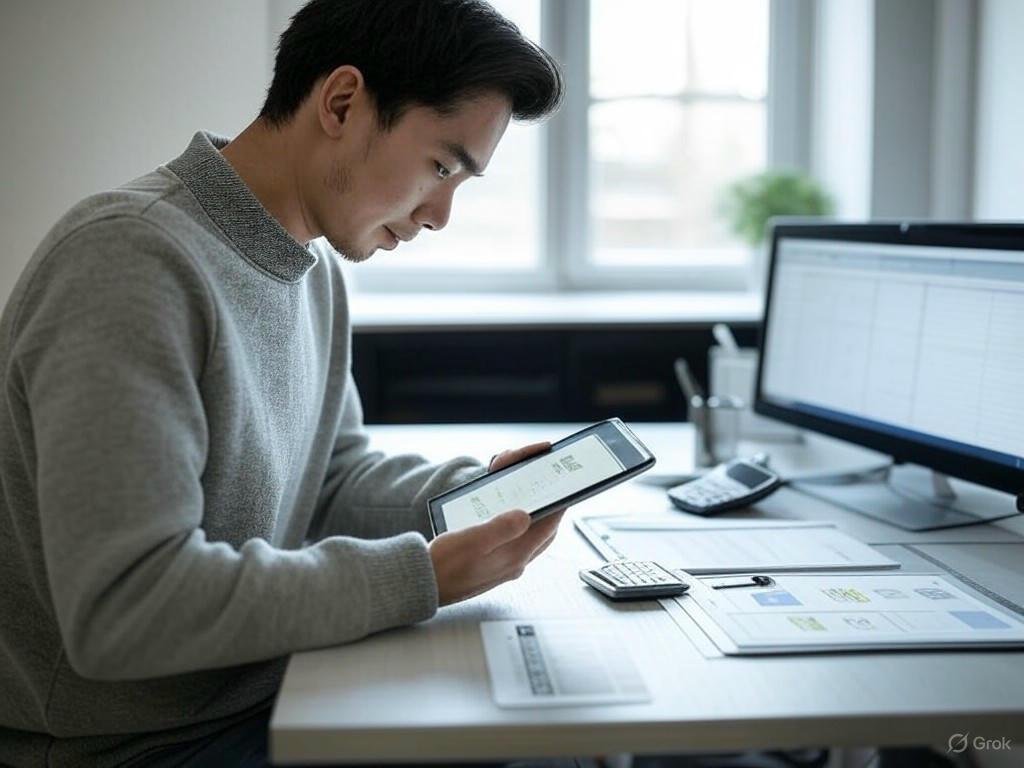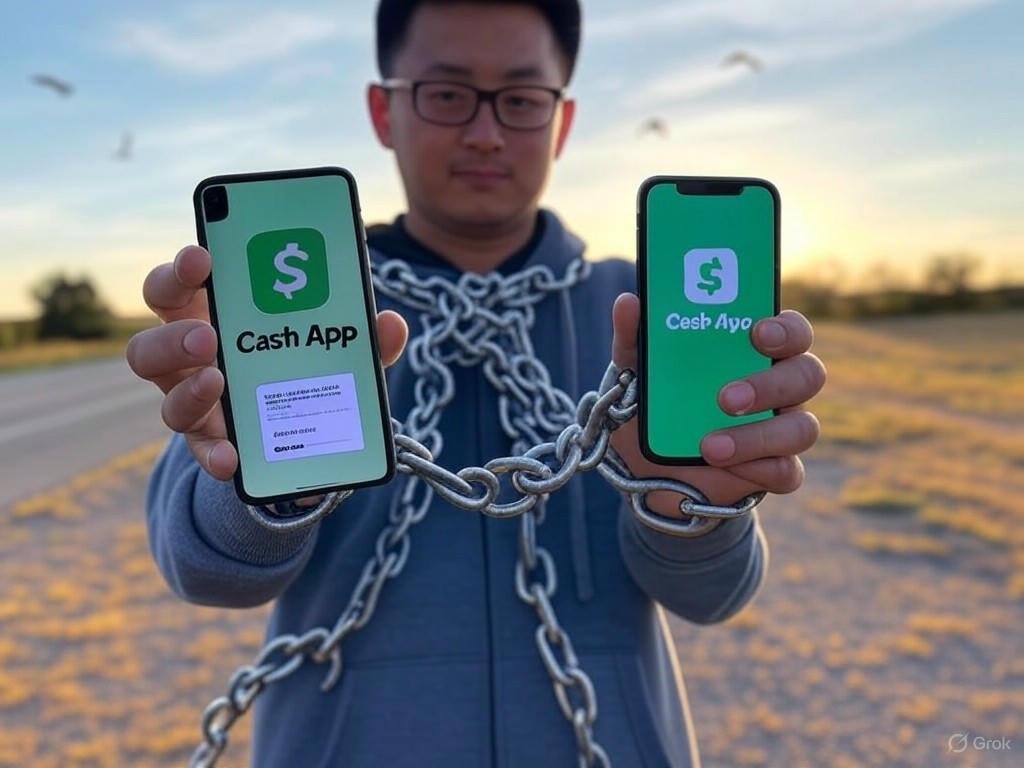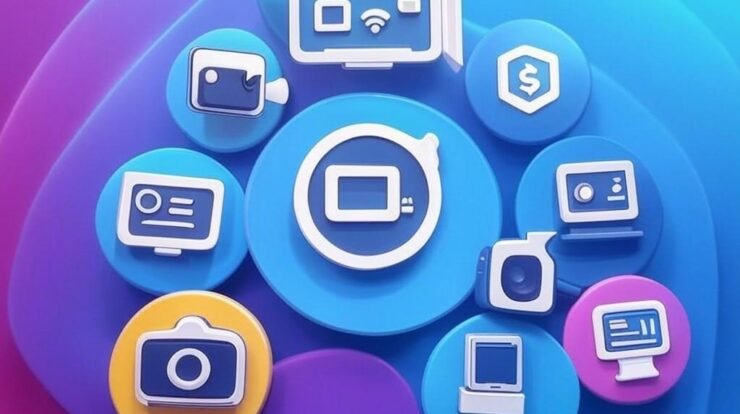In today’s fast-paced digital world, managing your money should be as seamless as sending a text. Cash App, a popular mobile payment platform, has become a go-to tool for millions of Americans looking to send, receive, and manage funds with ease. One of the first steps to unlocking the full potential of Cash App is linking your bank account. This allows you to transfer money, pay bills, or even invest in stocks and Bitcoin directly from your phone. But how exactly do you link your bank account to Cash App, and what should you know to ensure the process is smooth and secure? As someone who’s navigated the ins and outs of digital finance for years, I’m here to walk you through every step, share expert tips, and address common questions to help you confidently connect your bank account to Cash App.
This guide is designed for everyone—from tech-savvy millennials to those just dipping their toes into mobile payments. By the end, you’ll not only know how to link your bank account to Cash App but also understand how to troubleshoot issues, keep your account secure, and make the most of Cash App’s features. Let’s dive in!
Why Link Your Bank Account to Cash App?

Before we get into the nitty-gritty, let’s talk about why linking your bank account to Cash App is worth your time. Cash App, developed by Square, is a versatile platform that lets you do more than just send money to friends. By connecting your bank account, you can:
- Transfer Funds Instantly: Move money between your bank and Cash App for quick access to cash.
- Pay Bills or Shop Online: Use Cash App to pay utilities, subscriptions, or even shop at stores that accept digital wallets.
- Invest with Ease: Buy stocks or Bitcoin directly through the app, using funds from your linked account.
- Receive Direct Deposits: Set up your paycheck or government benefits to deposit directly into Cash App.
- Access Cash App Card: Fund your Cash App Card, a customizable debit card, for everyday purchases.
Linking your bank account essentially turns Cash App into a hub for your financial activities. It’s like giving your wallet a digital upgrade, but with that convenience comes the responsibility of ensuring everything is set up correctly and securely.
Step-by-Step Guide to Linking Your Bank Account to Cash App
Let’s break down the process of connecting your bank account to Cash App. The steps are straightforward, but I’ll include extra details to cover any potential hiccups. Whether you’re using a checking or savings account, or even a debit card, Cash App makes the process user-friendly.
Step 1: Download and Set Up Cash App
If you haven’t already, download Cash App from the Apple App Store or Google Play Store. Once installed, open the app and sign up using your email address or phone number. You’ll need to verify your identity by providing your full name, date of birth, and the last four digits of your Social Security Number. This step ensures compliance with federal regulations and keeps your account secure.
Step 2: Navigate to the Banking Tab
Once your account is set up, you’ll see a home screen with several icons. Look for the Banking tab, usually represented by a house or bank icon, located at the bottom-left of the screen. Tap it to access options for adding a bank account or debit card.
Step 3: Choose Your Linking Method
Cash App offers two primary ways to link your bank account:
- Using Your Debit Card: This is the fastest method, as it instantly verifies your account.
- Using Bank Account Details: This involves manually entering your bank’s routing and account numbers, which may take a couple of days to verify.
For most users, linking via a debit card is the easier option, but I’ll cover both methods so you can choose what works best.
Option 1: Linking with a Debit Card
- In the Banking tab, tap Add a Bank.
- Select Debit Card from the options.
- Enter your debit card number, expiration date, CVV code, and ZIP code.
- Cash App will verify the card, usually within seconds. You may see a small, temporary charge (typically $1) on your bank statement, which is refunded after verification.
Option 2: Linking with Bank Account Details
- In the Banking tab, tap Add a Bank and select Bank Account.
- Enter your bank’s routing number and account number. You can find these on a check, your bank’s website, or by contacting your bank.
- Cash App may ask you to sign into your bank’s online portal through a secure third-party service like Plaid. This service connects Cash App to your bank and verifies your account instantly in most cases.
- If manual verification is required, Cash App will make two small deposits (usually less than $1) to your bank account within 1-3 business days. Check your bank statement, note the amounts, and enter them in Cash App to complete the verification.
Step 4: Confirm the Link
Once your bank account or debit card is linked, you’ll see it listed under the Banking tab. You can now transfer money to and from your bank account, fund your Cash App balance, or use your Cash App Card. If you encounter issues, don’t worry—I’ll cover troubleshooting later.
Read more: X Ranker 360 Review: My Honest Take on This Video Ranking Tool
Tips for a Smooth Linking Process
As someone who’s linked multiple accounts to Cash App (and helped friends troubleshoot their setups), I’ve learned a few tricks to make the process painless:
- Double-Check Your Details: A single typo in your account or routing number can cause delays. If you’re using a debit card, ensure the card is active and not expired.
- Use a Supported Bank: Cash App works with most major U.S. banks, including Chase, Wells Fargo, Bank of America, and credit unions. However, some smaller banks or prepaid cards may not be supported. Check Cash App’s help section for a list of compatible institutions.
- Ensure Sufficient Funds: For debit card linking, your account should have at least $1 to cover the temporary verification charge.
- Update Your App: Running an outdated version of Cash App can cause glitches. Check for updates in your app store before starting.
- Be Patient with Manual Verification: If you’re entering bank details manually, the small deposit verification can take a few days. Keep an eye on your bank statement.
Keeping Your Cash App Account Secure

Security is a top concern when linking your bank account to any app, and Cash App is no exception. Here are some expert tips to protect your money and personal information:
- Enable Two-Factor Authentication (2FA): Go to your profile settings and turn on 2FA. This requires a code sent to your phone or email when logging in from a new device.
- Use a Strong PIN: Set a unique PIN or enable biometric authentication (fingerprint or face ID) to secure your Cash App account.
- Monitor Your Transactions: Regularly check your Cash App activity and bank statements for unauthorized transactions. Cash App’s in-app activity log makes this easy.
- Avoid Public Wi-Fi: When linking your account or making transactions, use a secure, private internet connection to prevent data interception.
- Beware of Scams: Never share your Cash App PIN, sign-in code, or bank details with anyone. Cash App will never ask for this information via email or phone.
If you suspect any suspicious activity, contact Cash App support immediately through the app or their website.
Read more: AICallings Review – Insights and Analysis on AI Communication Tool
Troubleshooting Common Issues
Even with a straightforward process, things can go wrong. Here are some common problems and how to fix them:
- “Invalid Card” Error: This usually means the debit card isn’t supported or the details were entered incorrectly. Verify your card number and ensure it’s issued by a supported bank.
- Verification Delays: If you’re using bank account details and don’t see the small deposits after three business days, contact your bank to ensure they’re not blocking the transactions.
- Plaid Connection Issues: If Plaid can’t connect to your bank, try manually entering your routing and account numbers or contact Cash App support.
- Account Already Linked: Cash App allows only one bank account or debit card to be linked at a time. If you want to switch accounts, remove the existing one first by going to the Banking tab, selecting the account, and choosing Remove Bank.
Maximizing Cash App’s Features After Linking
Once your bank account is linked, you can take full advantage of Cash App’s features. Here are a few ways to get the most out of the platform:
- Set Up Direct Deposit: Use your Cash App routing and account numbers (found in the Banking tab) to receive paychecks or government benefits directly. This is great for freelancers or gig workers.
- Get a Cash App Card: Order a free, customizable debit card linked to your Cash App balance. It’s accepted anywhere Visa is, and you can use it to withdraw cash from ATMs.
- Explore Investing: Cash App lets you buy fractional shares of stocks or invest in Bitcoin with as little as $1. It’s a beginner-friendly way to dip your toes into investing.
- Use Boosts: Cash App offers “Boosts,” which are discounts at select merchants (like coffee shops or retailers) when you use your Cash App Card. Check the app regularly for new offers.
Read more: Unveiling the Magic of stockdreams.AI – A Comprehensive Review
Frequently Asked Questions About Linking a Bank Account to Cash App
To wrap up, let’s address some common questions I’ve seen from users (and answered for friends) about linking a bank account to Cash App.
Can I Link Multiple Bank Accounts to Cash App?
No, Cash App currently allows only one bank account or debit card to be linked at a time. To switch, remove the current account and add a new one.
Is It Safe to Link My Bank Account to Cash App?
Yes, Cash App uses encryption and complies with Payment Card Industry Data Security Standards (PCI-DSS). However, you should still follow security best practices, like enabling 2FA and monitoring transactions.
How Long Does It Take to Link a Bank Account?
Linking with a debit card is instant in most cases. Manual verification with bank account details can take 1-3 business days for the small deposits to appear.
Can I Link a Savings Account to Cash App?
Yes, you can link a savings account, but some banks restrict transactions from savings accounts due to federal regulations. Check with your bank to confirm.
What Happens If I Enter the Wrong Verification Amounts?
If you enter incorrect deposit amounts during manual verification, Cash App will prompt you to try again. After multiple failed attempts, you may need to contact support.
Final Thoughts
Linking your bank account to Cash App is a simple yet powerful step toward managing your money more efficiently. Whether you’re splitting a dinner bill, paying rent, or exploring investments, Cash App’s versatility makes it a valuable tool in your financial toolkit. By following the steps outlined above, double-checking your details, and prioritizing security, you can set up your account with confidence and avoid common pitfalls. As someone who’s spent years exploring digital finance apps, I can say that Cash App’s ease of use and features make it a standout choice for anyone looking to streamline their money management.
If you run into issues or have questions, Cash App’s support team is just a tap away, and their help center is packed with resources. Now that you know how to link your bank account to Cash App, you’re ready to take control of your finances with ease. Happy transacting!






